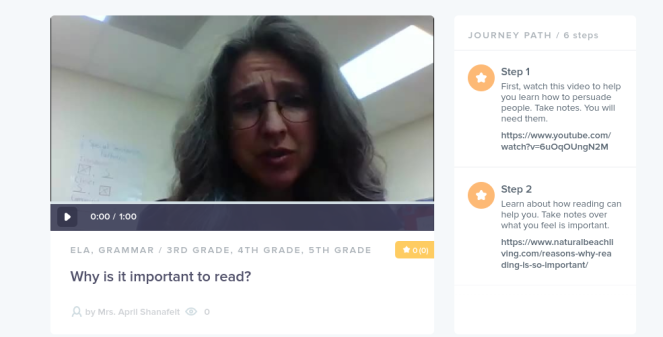This is the time of year both teachers and students dread the most. The weather is beautiful, spring activities make us all tired, and all of us are supposed to spend our time getting ready for the dreaded STAAR test. Over the years, I have done many different things to help make this less stressful and more fun. I have done camp, Olympic, and video game themes. I decided I wanted to do something different and remembered a friend doing an Amazing Race theme in her math class.
So, I went online to see what resources I could find to work for me. There are many ideas for birthday parties with this theme online. In addition, there are many resources on TPT that use this idea. This is my take on the idea–which means it is cheap and takes less than two conference periods of work to pull off. Yes, I really timed it. Well, when I remembered anyway.
The first thing I did was send out a mass email to my campus asking for volunteer classrooms to help us with the race. Six teachers responded.
Next, I talked with my fourth grade team about using our RTI time for three weeks before the test for our race. Since they are total treasures, they agreed to help. Our RTI time is 30 minutes.
I then let the students vote on which countries they wanted to visit during the race. The students write me a letter each week for homework, so I asked them each to pick a country and tell me why in their letter. They chose: Mexico, England, China, Russia, Japan, and France.
Here is where I started the timer:
Six minutes: I sat down with my Google Calendar and put each teacher volunteer and a country on every Tuesday/Thursday for the three week period. I sent out the calendar invites with a short description of what they would do. Tuesday groups were designated as detours, Thursday groups as road blocks. Here is the short note I copied and pasted in each calendar invite. The only thing I changed with each one was the name of the country assigned (not shown, I put it at the bottom) and roadblock/detour.
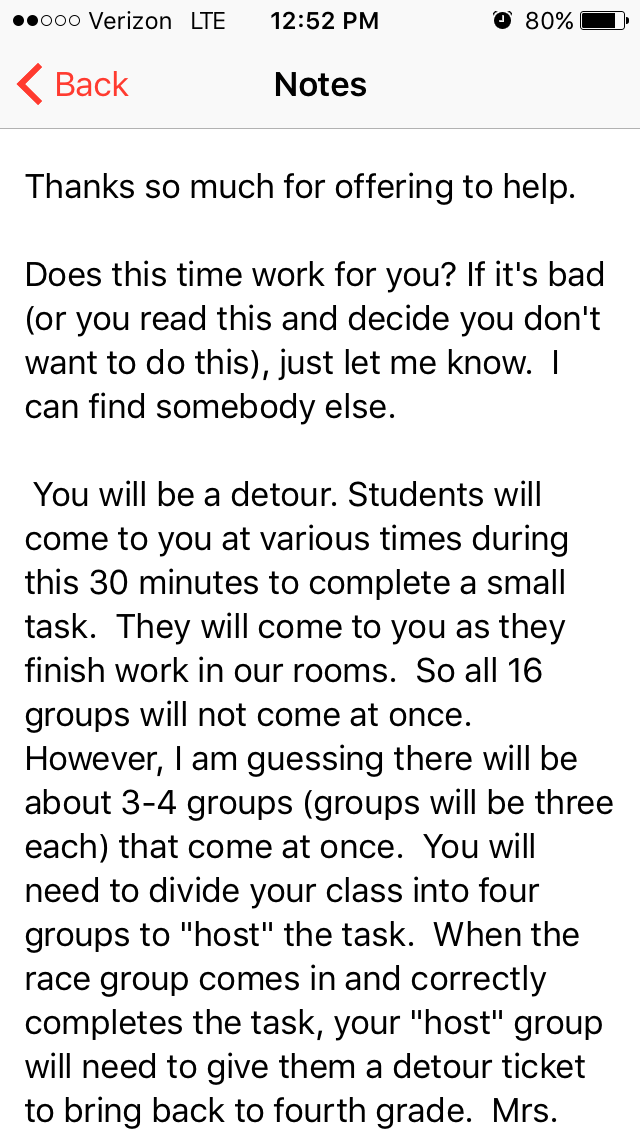
Three minutes: (I got lucky with no line)
I went to the Dollar Store and purchased a few rolls of crepe paper, some plastic tablecloths in different colors, and some painters tape.
Thirty Minutes on my conference period:
I sent two multiple choice STAAR practices down to the copier from my computer. Each practice was 14 questions long. While they copied, I took a chair and draped crepe paper up and down the hall in our hallway. It might take you longer if you need a ladder. I had already decided I wasn’t going to spend more time than 30 minutes. You could do more. I’m just not a decorator person. I can assure you the students were super pumped with just the crepe paper. I also put a strip of painters tape on the floor at the finish line and glued two magnets to the back of two clothespins.

Ten Minutes: I copied and pasted some clip art and numbers into Google Slides. I printed one copy of the numbers on various colors of paper. I printed copies of detour tickets on blue paper, roadblock tickets on purple paper, and the Amazing Race logo on yellow paper. I also begged small envelopes from the secretary when I got the papers off the copier.
Six Minutes: I typed up the clues for the first two countries and a few more directions for the host classroom. I printed those out along with a word search for the first country, Mexico. Here is a link to the word search.
Three Minutes: I used a Sharpie to write individual letters on note cards and put the letter sets in plastic bags. This was all the materials I needed for the first week of the race.

Total Time for the First Week: 58 minutes
Things I delegated and got help with (not included in the time because I didn’t do it):
I asked some of my early finishers to cut and glue the Amazing Race logos onto the brown envelopes (not included in my time).
I also asked my WONDERFUL teaching aide to make a few extra decorations for the hallway with her after school ACE group. You could honestly do without these if you needed to and just print off a flag for each country. We used these decorations to mark each door so that the students wouldn’t barge into the wrong classrooms during the race. She also made the letters for the finish line backdrops. If you wanted to make decorations, but you don’t have time…you could always enlist your students.
I asked my after school bus group to help by making the number signs. They used a lid to make the circles, cut out the numbers, and taped Popsicle sticks to the back with the painters tape.
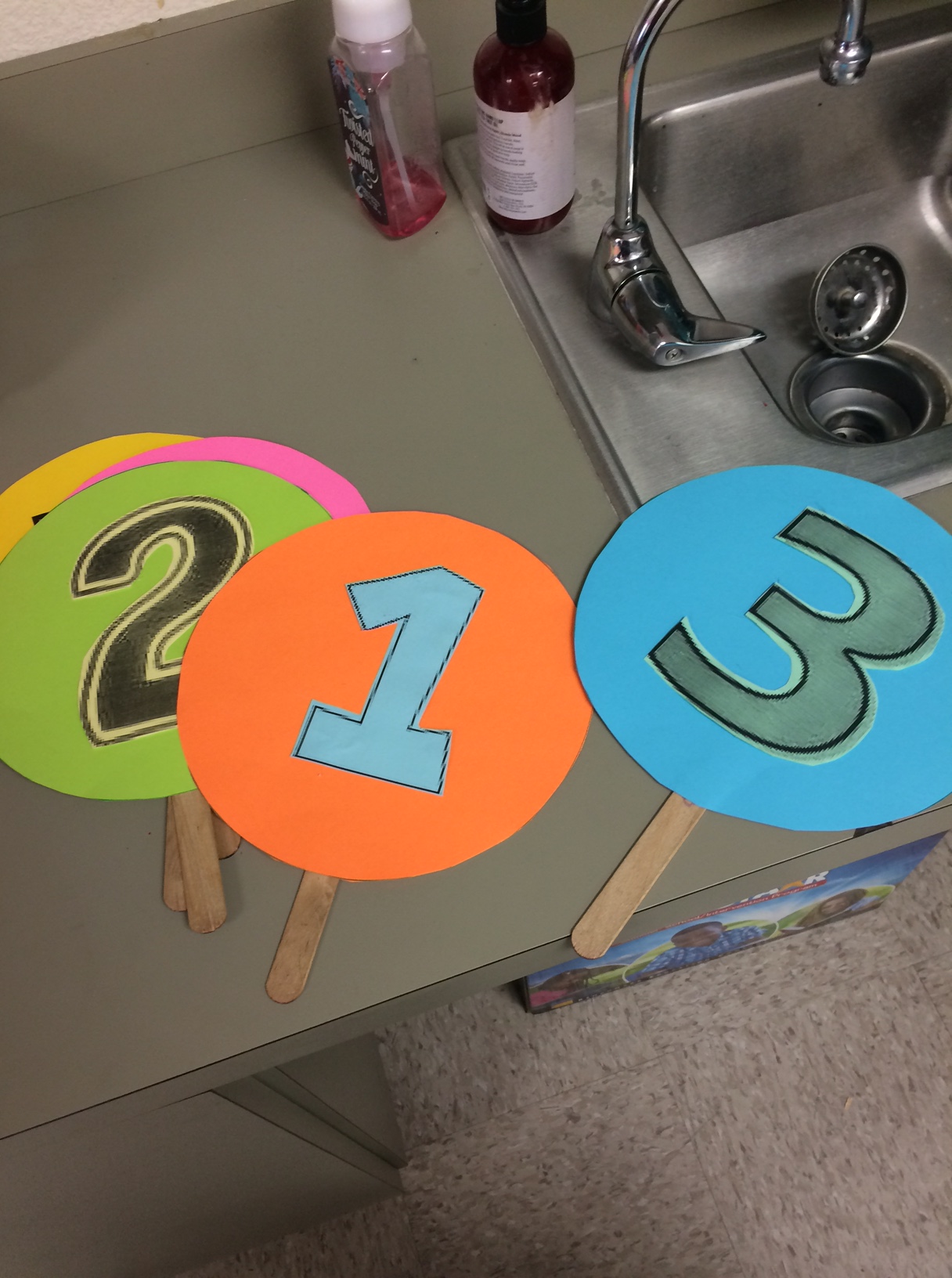
Things I forgot to time because I was in a hurry:
I divided the my students into groups of four. I have 52 students, so I did 13 teams. We have three homerooms, but I didn’t keep them grouped that way. I tried to mix up the abilities so that there wasn’t a “stacked” team. I did this one night while watching 60 Minutes. It was probably the most time-consuming task, but I feel like it took maybe twenty minutes.
Stuffing the envelopes with the clues each afternoon. This was under five minutes. I would guess three.
I also didn’t include in the time the first day of the race when I forgot to ask my aide to make letters for the backdrops. I grabbed a piece of construction paper, drew some block letters, and cut it out as I walked around conferencing with writers. They sort of looked like someone hacked them apart with safety scissors….because that’s what happened.
Grading the papers on Monday/Wednesday. I grade every day anyway, so I didn’t even worry about this. I just added it to my giant English teacher stack.
Here is how the race worked:
Monday: Each team went to one of the three fourth grade teacher’s rooms. They received a STAAR packet and were told nothing more about the race other than their teams and to do their best on the packet. I sat the teammates away from each other. No one was allowed to help anyone else. This was all independent work. They were super hyper about the whole thing. Some of them were lost and took awhile to get to the correct room/group. Others forgot supplies. Many spent some time just goofing around…..and I just watched it happen and waited for the next day. At the end of 30 minutes, we picked up the packets and put an X on each wrong or unfinished question.
Tuesday: The teams meandered their way back to the room from the day before. No one seemed in too big of a hurry. Until I told them the rules.
Rule One: No talking. If you talk, your group receives a five minute delay or you are sent to the back of the correction line.
Rule Two: No team receives the clue envelope until all team members make a 100 on the STAAR packet they began yesterday.
Then…the game was on.
I gave the packets back to the students. They made corrections and finished any left blank from the day before. They got in line to have me recheck. The other teachers in the other rooms did the same. When they had a completely correct paper, they got to sit in a designated spot and wait for their team. It was totally silent. Once a team was complete, they were given a clue envelope and sprinted away.
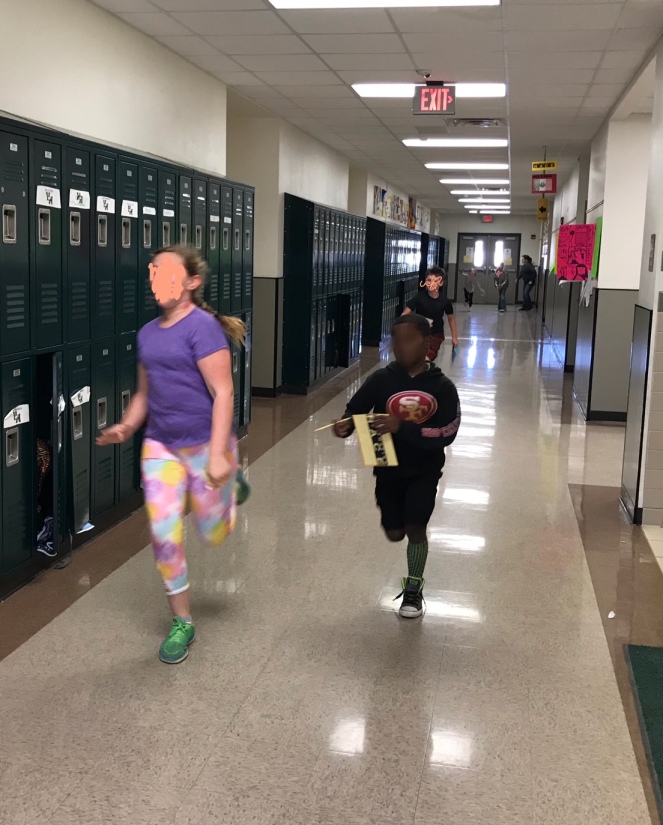
Once they found the correct room (a sixth grade room marked with Mexico), they entered to begin the detour. They chose between a word search and saying two grammar rules (a vs an and apostrophe s rules). When they finished the task, they were given the blue detour ticket and sprinted back to the finish line.

I was pretty much done checking my class by the time the first group crossed the line. I asked them to sit in the hallway with their place number and group. It got pretty loud and crazy. I then took photos against the plastic tablecloth backdrops I had clothes-pinned up to the lockers next to the finish line.
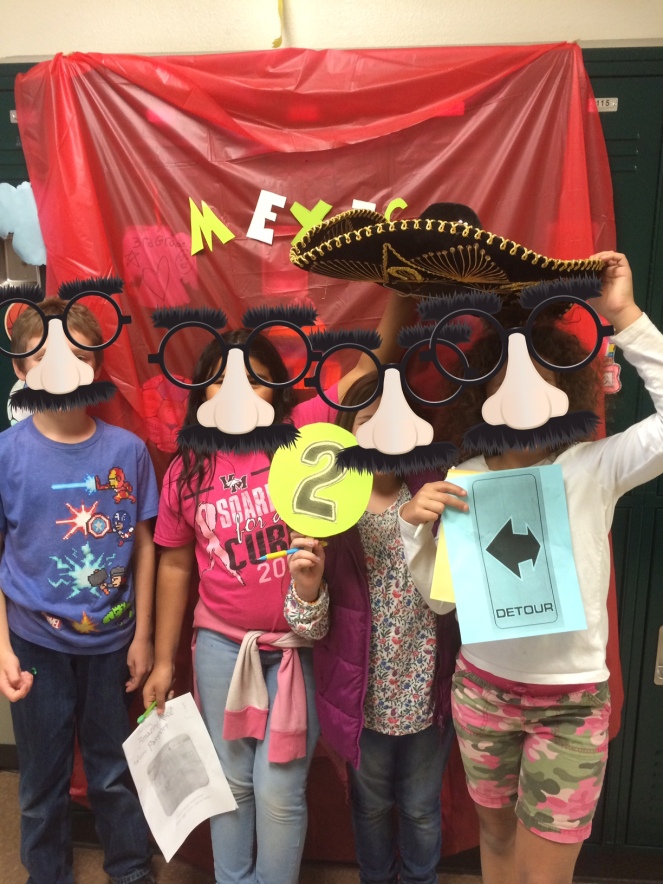
That first Tuesday, there were many groups who never even made it out of the room to race. Many had just not taken the STAAR practice seriously the day before and missed too many to have time to do all the corrections.
Wednesday: When it was time for RTI, you can imagine how fast everyone got to their groups. No one in my room wasted a second. Teams that placed first or second the previous day earned the advantage of having questions marked off that they didn’t have to complete (two for first and one for second). Placed three through five had an answer choice marked off of one or two questions. If they tried to turn in their packets too fast, I reminded them that any mistake on the practice would cost them time in the race tomorrow. As you could imagine, the amount of missed questions on the packets DRASTICALLY dropped.
Thursday: Race Day Two…students had very few corrections to make and almost all teams raced. I think we had maybe four teams who didn’t finish in time. Students raced to a second grade room to England. They were given note cards with letters to the words “tea time.” They had to use those letters to spell five different words. The second graders checked their work, gave them the purple road block ticket, and sent them on their way.
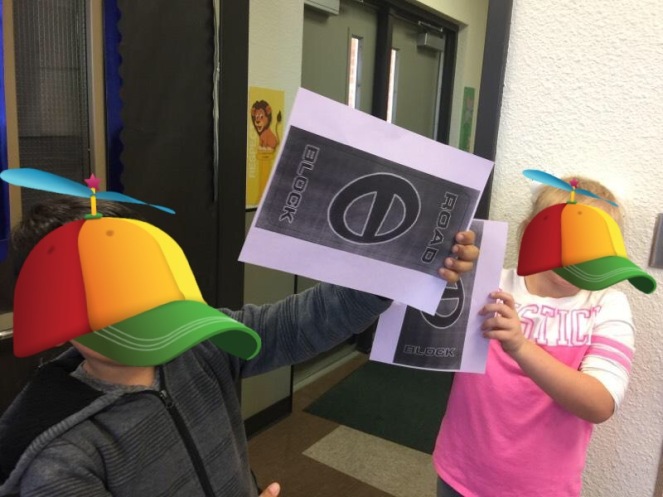
Friday: We had a great class discussion on Friday about how taking your time and concentrating makes a HUGE difference in how many you miss. When we did our class practice that day, we were all surprised and happy with how much better everyone did. I think they realized that they could do better than they ever thought if they just focused.
Here are some of the other Amazing Race activities we enjoyed during the following weeks:
China-This was a detour. Students had to say a grammar rule or move 35 beans from one bowl to another with chopsticks.
Japan–We are went to a Kindergarten class for this roadblock, so I didn’t want to do a word puzzle. My students had to read the directions and make sushi out of play dough.

Russia–On their race through Russia, students had to cut the pieces apart and assemble the stacking dolls. Here is a link to the template.
France–We haven’t completed this one yet. We are using the library. I’m rolling out a piece of cloth I have and pinning it to the floor. I have a box of old jewelry, coats, dress shirts, and dresses. Teams must put on a fashion show (which will be photographed) in order to get the detour ticket or say five grammar rules.
Good luck with the last weeks before the STAAR. Run a good race!
















